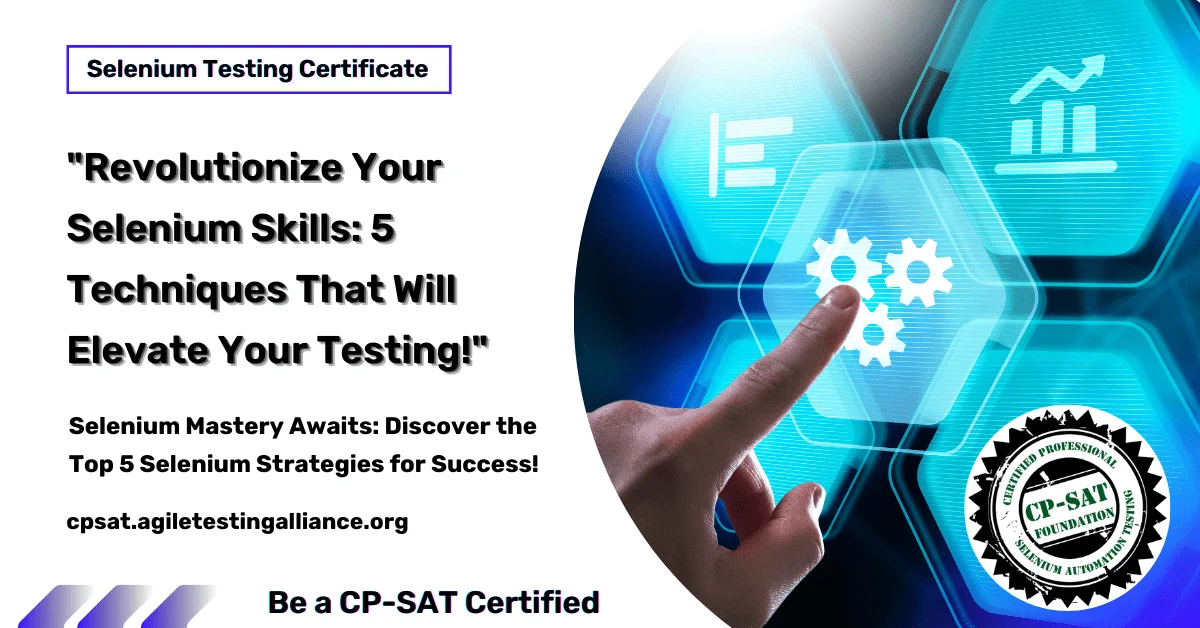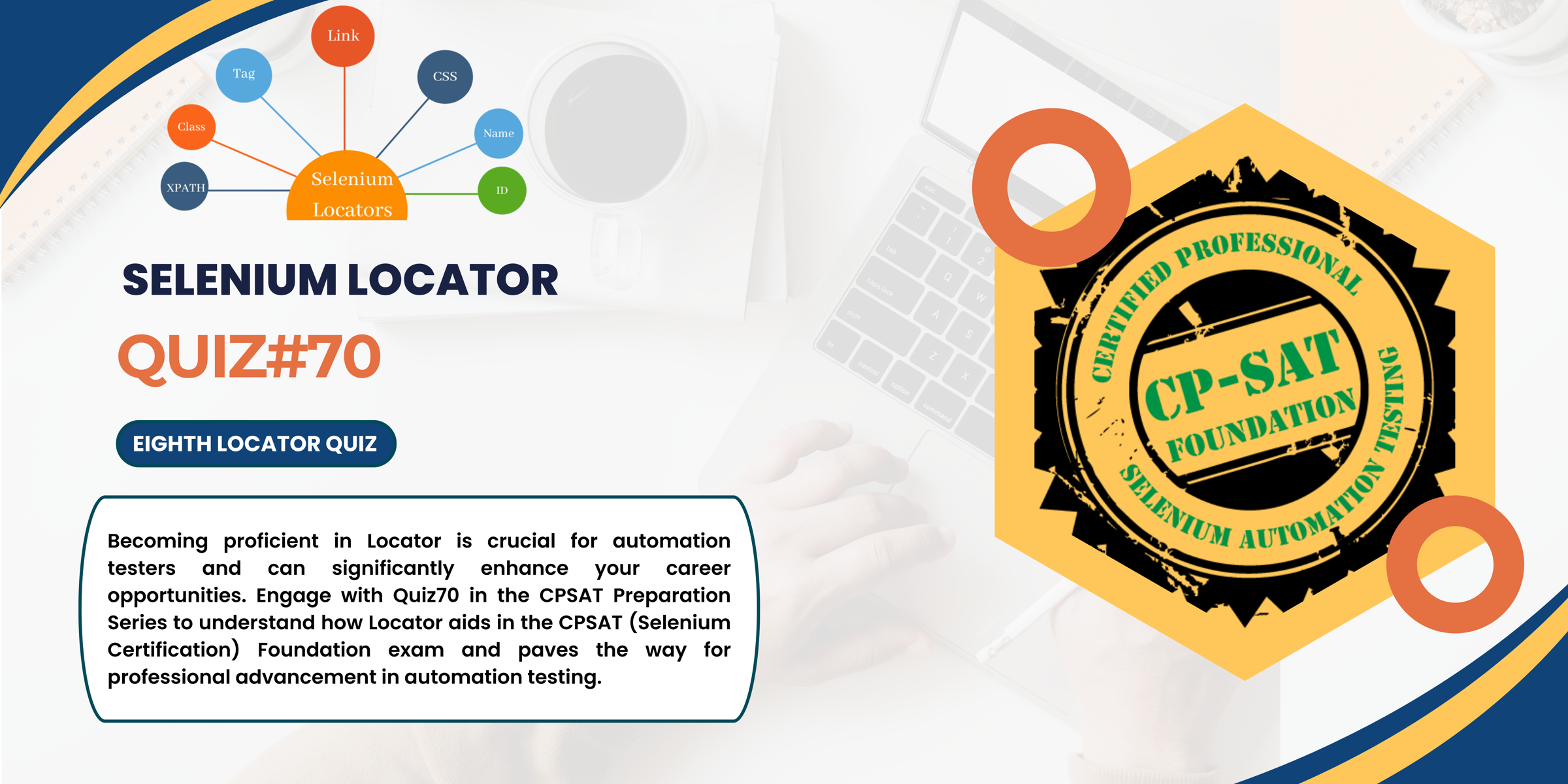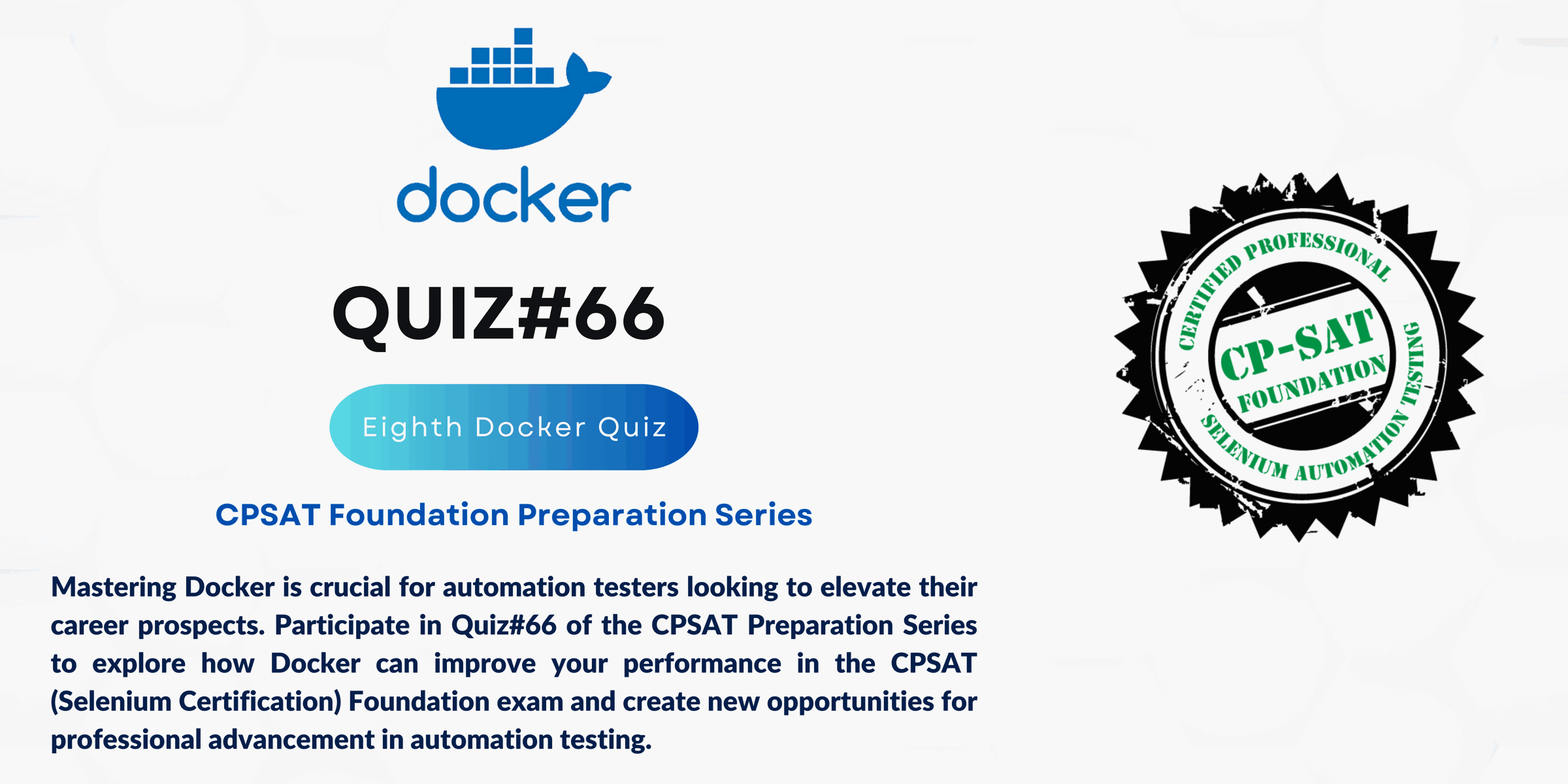Master Software Testing Basics: A Complete Guide

Table of Contents
Hello, and welcome to this comprehensive guide aimed to illuminate the path for those entering the world of software testing. If you are a beginner, fresher, or someone eyeing a career pivot into this dynamic industry, you’ve come to the right platform. Technology is ever-changing, and it’s essential for every aspiring tester and developer to adapt, learn, and grow. By mastering the basics of software testing, you’re setting yourself up for a career that’s not only rewarding but also incredibly impactful in today’s digital landscape.
Software testing is no longer a ‘nice-to-have’; it’s a ‘must-have’ in the modern software development process. With the digital revolution taking over every industry and geographic location, the need for high-quality, reliable software has never been greater. This guide serves as a roadmap to equip you with the fundamental knowledge, best practices, tools, and actionable insights. Let’s embark on this exciting journey together.
The Importance of Software Testing: Why You Can’t Afford to Skip It
So, let’s dive right in—why is software testing such a big deal? You see, in today’s interconnected, digital-first world, quality is more than just a buzzword; it’s a necessity. The stakes are high. One tiny glitch, and you could lose customers or, worse, damage your brand’s reputation irreparably. Trust me; you don’t want to be that team responsible for a software failure that becomes the talk of the town for all the wrong reasons.
Quality Sets You Apart
First and foremost, quality differentiates you in a fiercely competitive market. Whether you’re developing a local weather app or a global e-commerce platform, your users have expectations—high ones. They want your application to not only meet but exceed their needs. They want it fast, and they want it flawless. Falling short is not an option, and this is where robust software testing comes into play.
Ensuring Global Standards
You must remember that we’re talking about a global audience here. Software developed in one part of the world is often used in another. Standards like ISO and IEEE exist for a reason—to ensure that everyone is on the same page when it comes to quality. Comprehensive testing ensures that your software meets or exceeds these international benchmarks, making it globally acceptable.
Risk Mitigation
The next aspect we need to talk about is risk. Ah, yes, the dreaded ‘R’ word. In software development, the risks range from data breaches to system failures. The cost of such risks? Well, let’s just say they often come with a lot of zeros at the end. Effective software testing is your safety net, identifying vulnerabilities and weaknesses before they become catastrophic headlines.
A Catalyst for User Satisfaction
But let’s not forget about user experience—a cornerstone for any successful software project. You want users to enjoy interacting with your software, right? To achieve that level of engagement and satisfaction, your software needs to be tested rigorously. User Interface (UI), User Experience (UX), performance speed—each aspect needs to be put under the microscope.
Fostering Innovation
Let’s touch upon innovation. Testing is not just about finding what’s broken; it’s also about making room for continuous improvement. A good testing regimen provides actionable insights that can be used to innovate and evolve, making your software not just functional but exceptional.
Compliance and Accessibility
In our diverse world, accessibility is not an afterthought—it’s a requirement. Ensuring your software is accessible to people with disabilities is not just ethically right but often legally mandated. Testing helps in auditing the software for compliance with accessibility guidelines, making sure you’re catering to a broader, inclusive audience.
So, to wrap it up, software testing is not a checkbox to tick off but an integral phase in software development. It’s the cornerstone on which quality, reliability, and user satisfaction are built. Especially if you’re a fresher or newcomer, understanding the monumental role of software testing will prepare you for a career that’s as fulfilling as it is critical in today’s digital age.
Types of Software Testing: Navigating the Maze
Alright, let’s dig deeper into the types of software testing. Trust me, there’s more to it than you might initially think. Picture testing as a spectrum; on one end, you have something as simple as checking a button’s functionality, and on the other, you have complex, stress-testing protocols designed to simulate peak loads on your application. And between these two ends, my friends, lies a fascinating world of various types of testing techniques, each serving a unique purpose. So let’s break it down.
Unit Testing: The Building Blocks
First up is Unit Testing. Think of your software as a high-rise building. Each floor relies on the structural integrity of the floors below it. In software terms, these “floors” are code units—single functionalities that need to work flawlessly. Unit Testing ensures that each independent unit of your software performs exactly as it should. It’s like ensuring each floor of your building is stable before adding another one on top.
Integration Testing: Bridging the Gaps
Once your units (or floors, to stick with our analogy) are in place, you need to ensure they fit well together. That’s where Integration Testing comes in. This type of testing checks if different units co-exist harmoniously, enabling smooth functionality. If you’re working on a global platform, it’s even more crucial to ensure all components integrate seamlessly across different systems and cultures.
Functional Testing: Does it Work?
Next, we move onto Functional Testing, and as the name suggests, this is all about functionality. Does the software do what it’s supposed to do? From a user’s point of view, functional testing examines the system to ensure it behaves according to the defined specifications and requirements. It’s the “litmus test” for user experience and satisfaction, a global benchmark of sorts.
Performance Testing: How Fast Can it Go?
In our fast-paced world, speed matters. Performance Testing assesses the speed, responsiveness, and stability of your application under various conditions. Whether you’re targeting users in rural communities with slow internet or high-speed urban digital jungles, your software needs to perform consistently. Performance Testing ensures you meet these global expectations.
Security Testing: The Fort Knox of Software
In a world where data breaches make headlines, Security Testing is the unsung hero. It’s designed to unearth vulnerabilities and weaknesses in your security protocols. On a global scale, this is crucial because different countries have varying regulations around data security. Being compliant with these international norms is not optional; it’s mandatory.
Automation Testing: The Future is Now
Automation Testing is increasingly gaining traction, especially for repetitive and time-consuming tasks. Learning automation tools like Selenium, which I specialize in, can be a game-changer, especially for large-scale projects that require continuous monitoring.
Acceptance Testing: The Final Frontier
Last but not least, Acceptance Testing, often called User Acceptance Testing (UAT), is the final hurdle. This is where actual users test the software to see if it’s ready for production. If your software is going to be used globally, this phase is especially crucial to understand how it performs under different conditions and environments.
So, there you have it—a whirlwind tour of the various types of software testing. Each has its role and importance, and understanding these different types is your first step into the world of software testing. Whether you’re a fresher or a seasoned professional looking to switch gears, mastering these types will set you up for a career that’s not just rewarding but also incredibly impactful in shaping the digital landscape.
Types of Software Testing: A Real-World Example
So, you’ve got the basics of the types of software testing down, right? Now let’s put it into a context that’s easy to grasp. Let’s say you’re building an e-commerce app, a platform designed to be used globally. In this hypothetical situation, you want to make sure it works seamlessly, is fast, secure, and provides an excellent user experience for users from all over the world. So, how would these types of software testing apply? Let’s dive in.
Unit Testing: Product Page Perfection
Imagine you’ve designed the product page for your app. You have a description, some images, and a ‘Buy Now’ button. Unit Testing here would involve ensuring that each of these elements works just as it should. Is the image loading correctly? Does the description match the product? Does the ‘Buy Now’ button add the item to the cart? You’ll have to go through these, one by one. It’s like making sure the spices in a global dish suit palates across the world; each ingredient—or in this case, each unit—needs to be perfect.
Integration Testing: The Checkout Flow
Now that your product page works well, how does it interact with the cart and the payment gateway? Integration Testing will make sure that when a user clicks on ‘Buy Now,’ the item is added to the cart, the cart updates correctly, and that it successfully integrates with the payment systems. In a global context, it would also mean ensuring that various payment methods used worldwide are supported.
Functional Testing: User Experience
Functional Testing here means testing the app from the user’s perspective. Does the search function lead you to the correct products? Does the app allow for easy navigation between the home page, product pages, and the cart? Think of it like international travel. Every part, from booking a ticket to landing, has to function smoothly to make the journey pleasant.
Performance Testing: Speed and Stability
Since your app is going global, you’ve got to ensure it performs well not only on high-speed internet in urban areas but also on slower connections. Performance Testing will simulate different scenarios—like Black Friday-level traffic—to make sure your app can handle the heat.
Security Testing: Data Protection
This one’s non-negotiable. With users from different countries, your app must adhere to various data protection laws like GDPR in Europe. Security Testing will ensure that user data is encrypted and that the app is not vulnerable to hacks.
Automation Testing: Stress-Free Updates
For routine checks and updates, especially when dealing with a large, ever-changing inventory, Automation Testing can be invaluable. Automated scripts can perform repetitive tasks, like checking if 1,000 product links are working, so you don’t have to.
Acceptance Testing: The Global Test Drive
Finally, before your app hits the global markets, it’s put through Acceptance Testing. Here, real users from different countries will use your app, ensuring that it meets regional preferences and requirements.
Software Testing Life Cycle (STLC): The Journey from Idea to Launch
Alright, folks, let’s shift gears and delve into the Software Testing Life Cycle, or as the pros call it, STLC. Think of STLC like a globetrotting adventure. You start at home, prepare, and then go through various stages until you’re back, enriched and full of experience. Similar to how a product goes from an idea on a napkin to a fully-fledged app or website. Let’s break this down.
Requirement Analysis: Passport and Visas
Just as you can’t travel without knowing the visa requirements, in software testing, you need to understand what’s required. This phase involves deep-diving into the documentation and client requirements. You decide what kind of testing will be suitable: Is it manual or automated? What are the hardware and software necessities?
Test Planning: The Itinerary
Next up, planning. What will you test? How will you test it? Who will be involved? Consider this phase as creating your travel itinerary. Except, instead of sightseeing spots, you have features and modules that need checking.
Test Case Development: Packing the Essentials
Let’s get down to brass tacks. This phase involves writing the test cases and preparing the test data. Imagine you’re packing for your global journey. You have a checklist of items to carry, right? Similarly, test cases are your checklist for the features you’re about to examine.
Test Environment Setup: The Base Camp
Think of the test environment setup as setting up your base camp before a mountain climb. You’re not climbing yet, but you’re making sure everything is in place for when you do. Here, the environment needed for testing is prepared.
Test Execution: The Adventure Begins
You’ve packed your bags, set up camp, and now it’s time for action. Test Execution is where the real thrill lies. You start running your tests, just as you’d start exploring once you reach your travel destination. Each test case is like a spot on your travel itinerary.
Defect Logging: Journaling the Hiccups
No journey is flawless; you learn from the snags. If any test cases fail, then the issues are logged in a defect tracking tool. This is like writing down in your travel journal, noting what went wrong and what can be improved.
Test Closure: Homecoming and Reflection
Finally, the tests are completed, and it’s time for a review. What did you learn? How can you improve for the next cycle? Just like returning from a trip, you review and reflect, ready for the next adventure.
And there you have it, folks—a round-the-world journey through the Software Testing Life Cycle. Understanding each stage will not only make you a top-notch tester but will also streamline the process, ensuring top quality. Remember, global excellence starts with local expertise. So, take these lessons and set forth on your testing journey. You’re now cleared for takeoff!
Conclusion: Your Launchpad to Global Software Testing Success
So, here we are, folks, at the end of this whirlwind tour of the software testing universe. Let’s take a moment to recap and reflect on the essentials that will elevate your software testing journey from beginner to seasoned pro. If you’ve made it this far, it’s evident you’re committed to upskilling in one of the most in-demand sectors in today’s global tech landscape.
Bridging The Gap
By now, you should have a much clearer understanding of how critical software testing is for ensuring superior product quality. In essence, testing is the bridge that connects the coding world to the end-users. Proper testing ensures that this bridge is strong, stable, and reliable.
Think Globally, Act Locally
When it comes to excelling in software testing, having a global perspective is a must. Technologies and methodologies are rapidly evolving, and no one wants to be left behind. But remember, global excellence starts with local expertise. Focus on honing your skills, be it in Manual Testing, Automated Testing, or specialized tools like Selenium, JUnit, and TestNG.
Never Stop Learning
The software testing field is constantly evolving, and there’s always something new to learn. Platforms like Coursera, Udemy, and even YouTube are treasure troves of up-to-date information.
You’re Not Alone
Remember, the software testing community is vast, and support is just a click away. Websites like Stack Overflow, GitHub, and various testing forums are great places to seek advice, share your challenges, and offer your expertise to others.
Take the Leap
Finally, don’t hesitate to take that first leap into your software testing career. Like they say, the best time to start was yesterday, the second best time is now. So, dig in, start learning, and before you know it, you’ll be well on your way to becoming an indispensable asset in the software testing industry. Your key phrases here could be “starting a career in software testing” or “how to become a software tester.”
Armed with this knowledge and guided by these best practices, you’re poised to embark on an exciting, rewarding journey in software testing. Your road to becoming a globally recognized software tester is now wide open. So, gear up and set forth! Your ticket to global tech acclaim is just one test cycle away. Happy testing!












